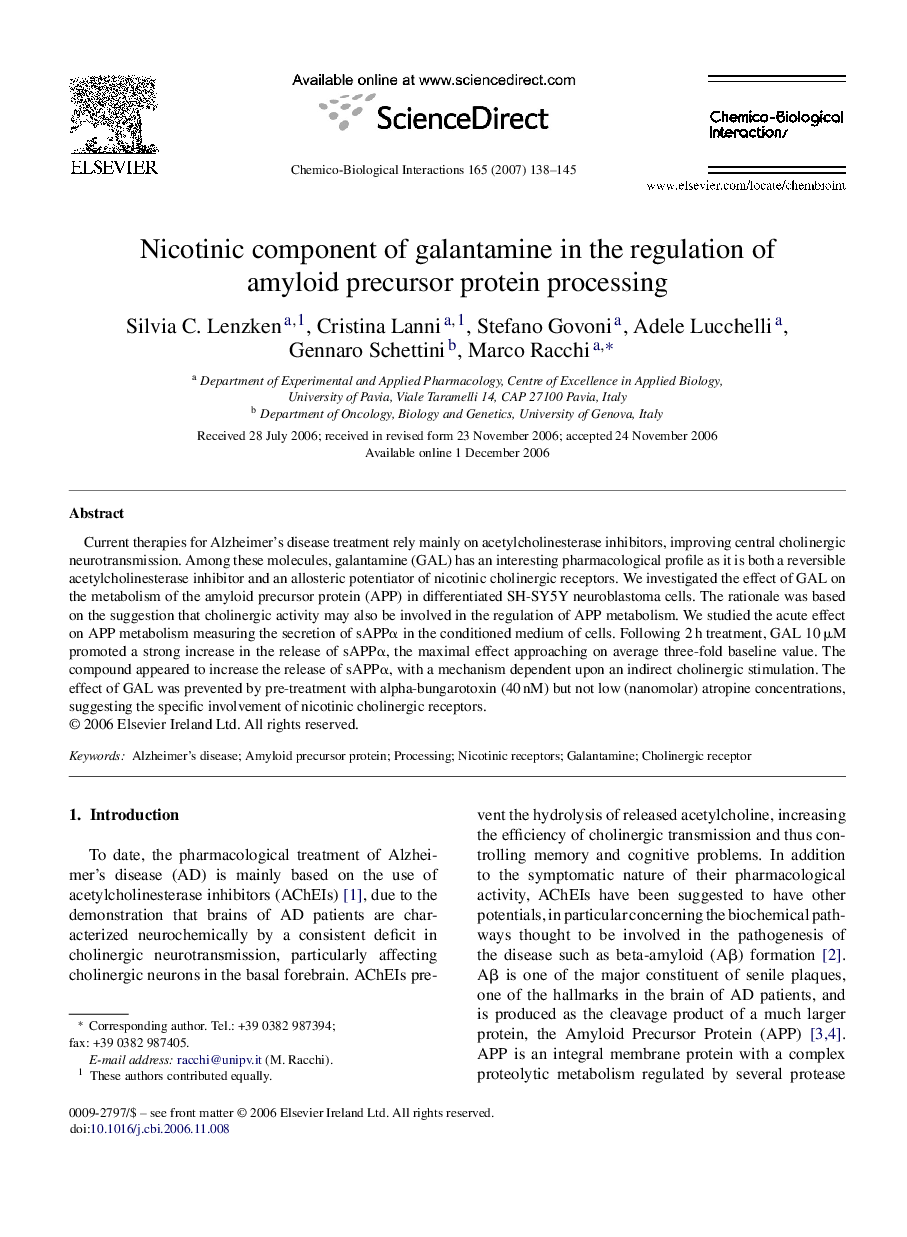| Article ID | Journal | Published Year | Pages | File Type |
|---|---|---|---|---|
| 2582166 | Chemico-Biological Interactions | 2007 | 8 Pages |
Current therapies for Alzheimer's disease treatment rely mainly on acetylcholinesterase inhibitors, improving central cholinergic neurotransmission. Among these molecules, galantamine (GAL) has an interesting pharmacological profile as it is both a reversible acetylcholinesterase inhibitor and an allosteric potentiator of nicotinic cholinergic receptors. We investigated the effect of GAL on the metabolism of the amyloid precursor protein (APP) in differentiated SH-SY5Y neuroblastoma cells. The rationale was based on the suggestion that cholinergic activity may also be involved in the regulation of APP metabolism. We studied the acute effect on APP metabolism measuring the secretion of sAPPα in the conditioned medium of cells. Following 2 h treatment, GAL 10 μM promoted a strong increase in the release of sAPPα, the maximal effect approaching on average three-fold baseline value. The compound appeared to increase the release of sAPPα, with a mechanism dependent upon an indirect cholinergic stimulation. The effect of GAL was prevented by pre-treatment with alpha-bungarotoxin (40 nM) but not low (nanomolar) atropine concentrations, suggesting the specific involvement of nicotinic cholinergic receptors.
